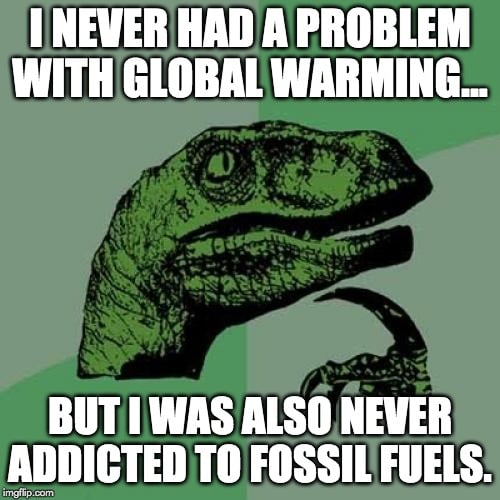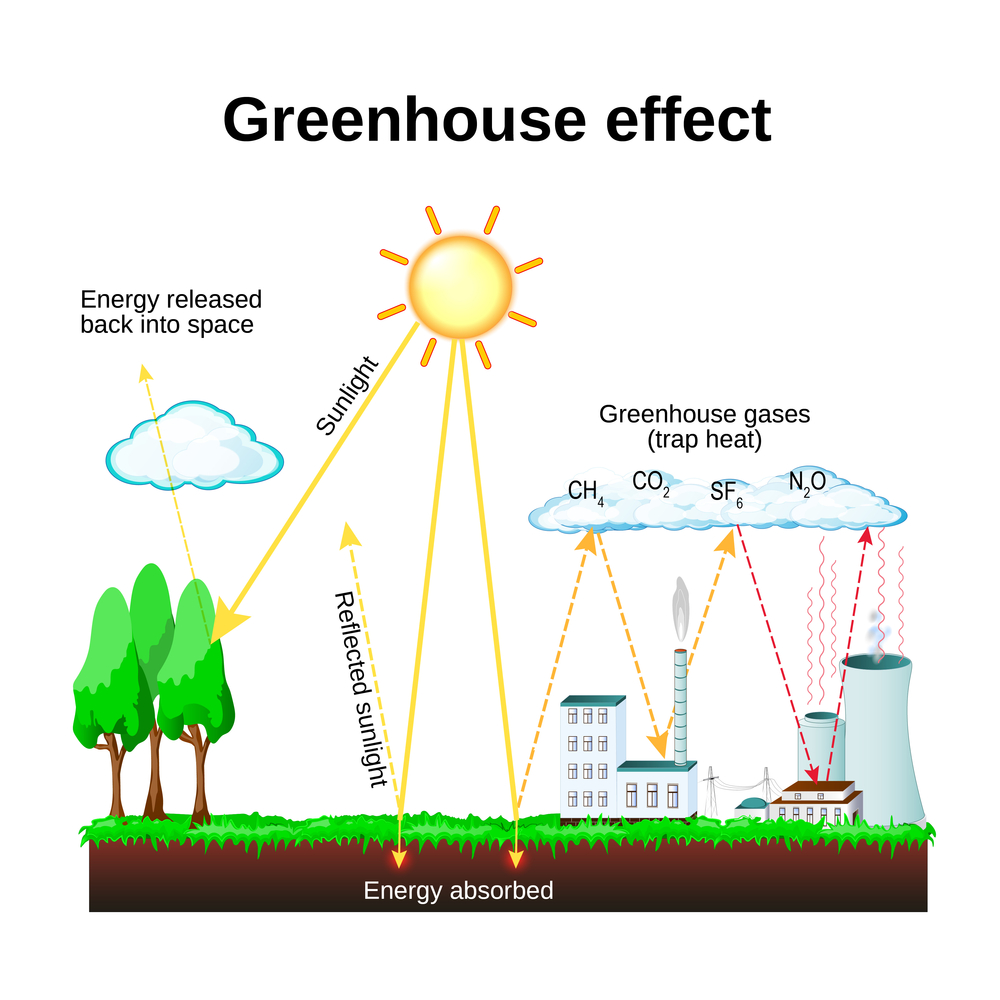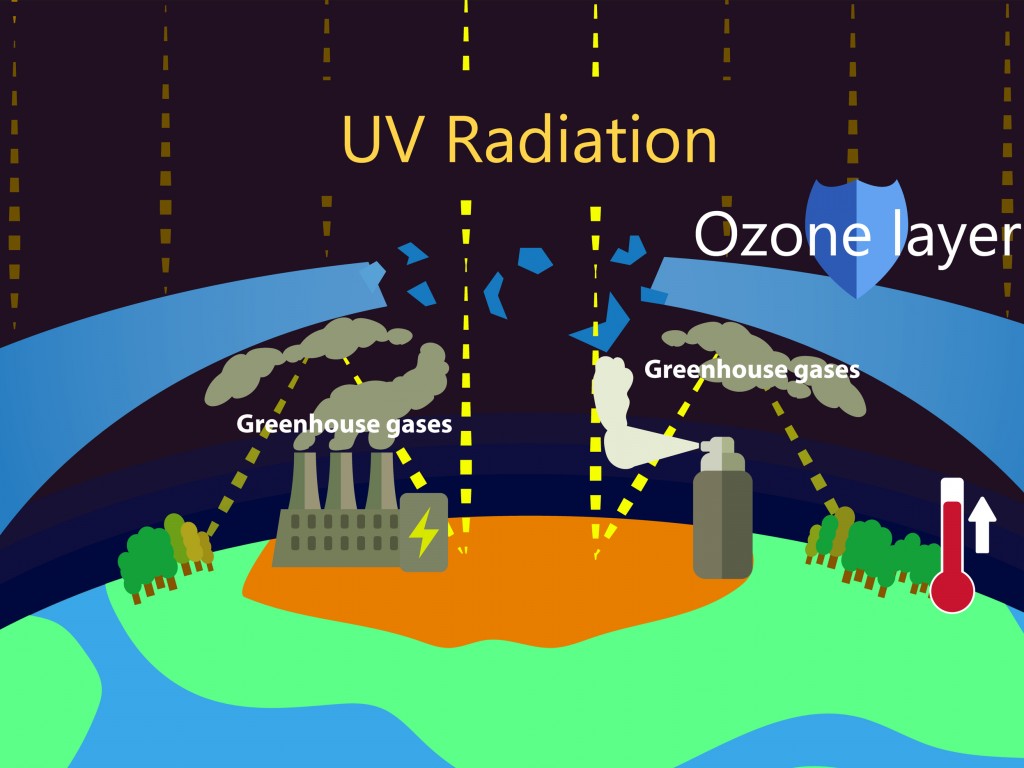What Is A Greenhouse Gas?
Simply put, a greenhouse gas is an atmospheric gas that is able to trap radiation from the sun after it is reflected back off the Earth’s surface. That is where the term “greenhouse” gas came from, because this global process operates on the same principles as a greenhouse where plants are cultivated. Sunlight streams in through the glass walls of the greenhouse, and much of that radiation is absorbed by the plants, but the low-level radiation is unable to escape back out from the greenhouse, which results in heating the air, keeping the temperature balmy, even in colder climes.
When you extrapolate that greenhouse into the atmosphere of the planet, a lot of the radiation from the sun is absorbed by the waters of the ocean and the plants on land, but some of that radiation reflects back upwards, where it is absorbed by greenhouse gases, incrementally raising the global temperature.
On the way to Earth’s surface, the radiation is able to pass through these greenhouse gas molecules because of its wavelength intensity. On the way back out, when it is re-radiated from the ground, it is in a lower wavelength, one that can be absorbed by the molecules of greenhouse gases. In the distant past, approximately 11,000 years ago, an accumulation of greenhouse gas in the atmosphere led to the end of the last ice age, enabling civilization as we know it to develop. However, as in so many areas of life, moderation is key.
Now, as you likely know, the vast majority of our atmosphere is composed of nitrogen and oxygen, neither of which are able to absorb infrared radiation. However, the increase of greenhouse gases, even as trace percentages in the atmosphere, means that more infrared radiation is being trapped in the atmosphere, leading to a rapidly increasing global temperature, more extreme weather events, rising sea levels due to melting ice caps, and the acidification of the ocean.
There are a number of different greenhouse gases, some natural (present on Earth before human activity) and some artificial (generated as a result of human activity). The most notorious greenhouse gases include carbon dioxide (CO2), methane (CH4), nitrous oxide (N2O), water vapor (H2O), ozone (O3), and fluorinated compounds, such as chlorofluorocarbons, hydrofluorocarbons, perfluorocarbons and sulfur hexafluoride, among others.
Where Do Greenhouse Gases Come From?
The catch-all term greenhouse gases can be misleading, because these gases are produced in a variety of ways, and some have been present on the planet billions of years before human beings ever appeared. Let’s take a closer look at what the individual greenhouse gases are, and how they are produced—either naturally or artificially.
The Greenhouse effect (Photo Credit : Designua/ Shutterstock)
Water Vapor – Rarely referred to as a greenhouse gas, due to its permanently cyclical role within the atmosphere and water cycle of the planet, water vapor (H2O) does have the ability to absorb infrared radiation in the atmosphere.
Carbon Dioxide – Carbon dioxide is primarily produced through the burning of fossil fuels, such as oil and gas, which releases their carbon into the atmosphere, as well as other industrial processes. Additionally, carbon that has been sequestered in trees and plants is released when those plants and trees are burned. This is a slippery slope, however, as the more trees that are burned, the fewer trees there are to sequester additional carbon, despite an increasingly large amount of available carbon dioxide in the air. The ocean can also sequester some amount of carbon, but when the atmospheric concentration of CO2 is excessive, it can lead to oceanic acidification and catastrophic effects on marine ecosystems.
Methane – Mainly produced in agricultural processes, such as livestock rearing, since animals produce a great deal of methane in their digestive processes and subsequent “gaseous releases” and manure.
Nitrous Oxide – The use of fertilizers for large-scale agriculture operations produce a good amount of nitrous oxide, as microbial life will undergo nitrification processes; a byproduct of this is the release of nitrous oxide into the atmosphere.
Also Read: Why Is Carbon Dioxide A Greenhouse Gas?
Ozone –
(Photo Credit : Cheryt/ Shutterstock)
There are two kinds of ozone: the good kind is formed naturally high in the atmosphere due to the splitting of oxygen atoms by infrared radiation; the bad kind is generated by internal combustion engines and power plants, which produce volatile organic compounds and nitrogenous gases. These byproducts can combine under the proper temperature and radiation conditions to form low-atmosphere ozone, which is a potent greenhouse gas.
Fluorinated Compounds – There is a wide variety of uses and applications for fluorinated gases, so much that they rightfully deserve their own article. These gases include the most potent and the longest-lasting greenhouse gases, and none of them are naturally occurring on the planet. Some of these compounds are produced as byproducts of industrial processes, such as aluminum production, while some fluorinated gases are intentionally produced for their use in products and processes, some percentage of which is released during the process.
It is not just CO2
- Forums
- Political Debate
- EV or ICE ?
EV or ICE ?, page-9
-
- There are more pages in this discussion • 63 more messages in this thread...
You’re viewing a single post only. To view the entire thread just sign in or Join Now (FREE)







